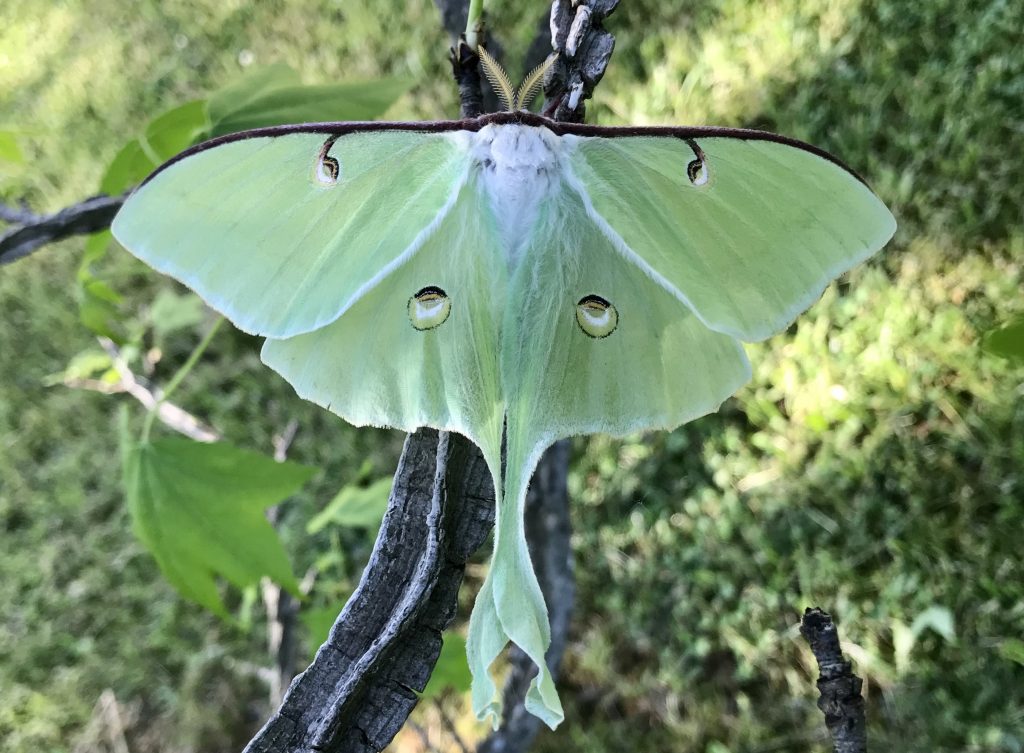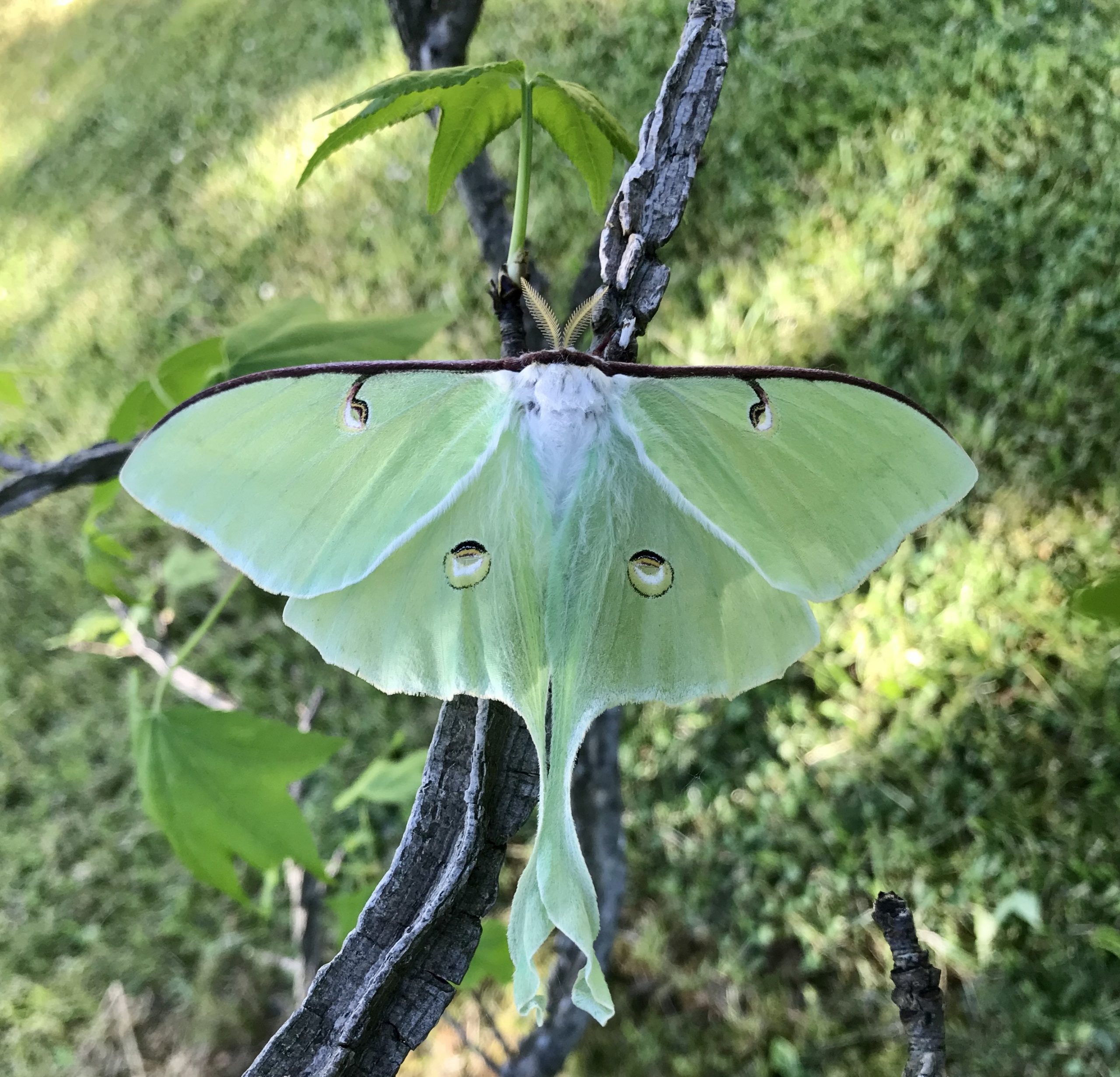
A few weeks ago, we found this gorgeous Luna Moth in our yard, near a sweetgum tree. The moth was in good condition, but seemed unable to fly. We decided it was likely a male, when we noticed the antenna were feathered to the tips, and knowing that Luna Moth adults live only a few days, we set the moth on a branch to admire it.
We knew the moth had probably fulfilled its purpose, attracted by the pheromones of a female Luna to fertilize her eggs which she would lay on the leaves of a host tree. Checking a resource I inherited from my father, the 1937 printing of the Field Book of Insects, Lutz states that “the moth itself is rather generally considered to be our most beautiful insect, but it’s lovely green fades rapidly to a light gray.” This author says that once seen, a Luna Moth is rarely forgotten, and I couldn’t agree more.
Click here to become a member!
Click here to donate!
I remember longing to see one when I was young, and finally getting that opportunity at a nearby Niagara County state park. A few years ago, when hiking Onondaga Trail on the Iroquois Refuge, I saw a newly emerged Luna pumping its long tailed wings, to dry them on the base of one of the large tulip trees near the trail terminus. If you’ve never visited Onondaga Trail, give it a try. Come prepared to enjoy a quiet contemplative trail, first through marsh, and then upland forest where you might be lucky enough to see a Luna Moth.

Kaufman Field Guide to Insects of North America states that food plants of the Luna Moth larvae vary, including birches in the north, sweetgums in the south , and hickories, walnuts, persimmon, and other trees. Web sources also mention sumac. Once the bright green caterpillar grows to maturity, a thin cocoon is made between leaves on the ground. This pupa then over winters on the ground. Hence, it’s a good idea to plant native trees, leave wild spaces in your yard and avoid the temptation to use insecticides for Gypsy Moth invasions, such as we are having this year. Other threats to our large Saturniid moths are habitat loss and light pollution.


